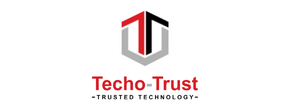The amount of liabilities represents the value of the business assets that are owed to others. It is the value of the assets that people outside the business can lay claim to. An asset is a resource that is owned or controlled by the company to be used for future benefits. Some assets are tangible like cash while others are theoretical or intangible like goodwill or copyrights. Working capital indicates whether a company will have the amount of money needed to pay its bills and other obligations when due. In other words, all assets initially come from liabilities and owners’ contributions.
Even when the balance sheet balances itself out, there is still a possibility of error that doesn’t involve the accounting equation. To understand the accounting equation better, let’s take a few practical transactions and analyze their effect. Double-entry bookkeeping is a system that records transactions and their effects into journal entries, by debiting one account and crediting another. Now, there’s an extended version of the accounting equation that includes all of the elements (described in the section above) that comprise the Owner’s Equity. Let’s check out what causes increases and decreases in the owner’s equity.
- So, if you really understand this equation, the rest of accounting becomes that much easier.
- Working capital indicates whether a company will have the amount of money needed to pay its bills and other obligations when due.
- As business transactions take place, the values of the accounting elements change.
- The Accounting Equation is a fundamental principle that states assets must equal the sum of liabilities and shareholders equity at all times.
$10,000 of cash (asset) will be received from the bank but the business must also record an equal amount representing the fact that the loan (liability) will eventually need to be repaid. Capital essentially represents how much the owners have invested into the business along with any accumulated retained profits or losses. The capital would ultimately belong to you as the business owner. Liabilities (or obligations) are assets owed to creditors. Creditors include people or entities the business owes money to, such as employees, government agencies, banks, and more.
The double entry accounting system recognizes a two-fold effect in every transaction. Thus, business transactions are recorded in at least two accounts. After six months, Speakers, Inc. is growing rapidly and needs to find a new place of business.
The accounting equation ensures that the balance sheet remains balanced. That is, each entry made on the debit side has a corresponding entry (or coverage) on the credit side. The accounting equation states that a company’s total assets are equal to the sum of its liabilities and its shareholders’ equity. The balance sheet is one of the three main financial statements that depicts a company’s assets, liabilities, and equity sections at a specific point in time (i.e. a “snapshot”). Under the double entry accounting system, transactions are recorded through debits and credits.
Since the balance sheet is founded on the principles of the accounting equation, this equation can also be said to be responsible for estimating the net worth of an entire company. The fundamental components of the accounting equation include the calculation of both company holdings and company debts; thus, it allows owners to gauge the total value of a firm’s assets. For a company keeping accurate accounts, every business transaction will be represented in at least two of its accounts. For instance, if a business takes a loan from a bank, the borrowed money will be reflected in its balance sheet as both an increase in the company’s assets and an increase in its loan liability.
Double-entry accounting is a system that ensures that accounting and transaction equation should be equal as it affects both sides. Any change in the asset account, there should be a change in related liability and stockholder’s equity account. While performing journal entries accounting equation should be kept in mind. In https://simple-accounting.org/ this form, it is easier to highlight the relationship between shareholder’s equity and debt (liabilities). As you can see, shareholder’s equity is the remainder after liabilities have been subtracted from assets. This is because creditors – parties that lend money such as banks – have the first claim to a company’s assets.
Guide to Understanding Accounts Receivable Days (A/R Days)
From setting up your organization to inviting your colleagues and accountant, you can achieve all this with Deskera Books. You can witness the easy implementation of the tool and try it out to get a renewed experience while handling your accounting system. Assets represent the ability your business has to provide goods and services.
Basic Accounting Equation
The trial balance includes columns with total debit and total credit transactions at the bottom of the report. Before getting into how the accounting equation helps balance double-entry bookkeeping, let’s explain each element of the equation in detail. As we previously mentioned, the accounting basic accounting equation is the same for all businesses. It’s extremely important for businesses in that it provides the basis for calculating various financial ratios, as well as for creating financial statements. An organisation ABC wish to buy a ₹500 manufacturing machine using cash.
This statement reflects profits and losses that are themselves determined by the calculations that make up the basic accounting equation. In other words, this equation allows businesses to determine revenue as well as prepare a statement of retained earnings. This then allows them to predict future profit trends and adjust business practices accordingly. Thus, the accounting equation is an essential step in determining company profitability. The accounting equation is the basic element of the balance sheet and the primary principle of accounting.
The Balance Sheet
It is decreased by withdrawals by owners (dividends in corporations) and expenses. The equation is generally written with liabilities appearing before owner’s equity because creditors usually have to be repaid before investors in a bankruptcy. In this sense, the liabilities are considered more current than the equity. This is consistent with financial reporting where current assets and liabilities are always reported before long-term assets and liabilities. Valid financial transactions always result in a balanced accounting equation which is the fundamental characteristic of double entry accounting (i.e., every debit has a corresponding credit). The income and retained earnings of the accounting equation is also an essential component in computing, understanding, and analyzing a firm’s income statement.
It records the assets, liabilities, and owner’s equity of a business at a specific time. Just like the accounting equation, it shows us that total assets equal total liabilities and owner’s equity. The accounting equation equates a company’s assets to its liabilities and equity. This shows all company assets are acquired by either debt or equity financing. For example, when a company is started, its assets are first purchased with either cash the company received from loans or cash the company received from investors.
Transaction #3 results in an increase in one asset (Service Equipment) and a decrease in another asset (Cash). The business has paid $250 cash (asset) to repay some of the loan (liability) resulting in both the cash and loan liability reducing by $250. Required
Explain how each of the above transactions impact the accounting equation and illustrate the cumulative effect that they have. We will now consider an example with various transactions within a business to see how each has a dual aspect and to demonstrate the cumulative effect on the accounting equation. In the case of a limited liability company, capital would be referred to as ‘Equity’. Additionally, it doesn’t completely prevent accounting errors from being made.
Income
The bread and butter lies in freeing up your human labor to work on value-based tasks, while automating manual processes. Liabilities and capital were not affected in transaction #3. Interest (ie finance costs) are an expense to the business. Therefore cash (asset) will reduce by $60 to pay the interest (expense) of $60. The cash (asset) of the business will increase by $5,000 as will the amount representing the investment from Anushka as the owner of the business (capital). Want to learn more about recording transactions and doing accounting for your small business?
Start with a free account to explore 20+ always-free courses and hundreds of finance templates and cheat sheets. The global adherence to the double-entry accounting system makes the account keeping and tallying processes more standardized and more fool-proof. The major and often largest value assets of most companies are that company’s machinery, buildings, and property. These are fixed assets that are usually held for many years. Accounts receivable list the amounts of money owed to the company by its customers for the sale of its products.











